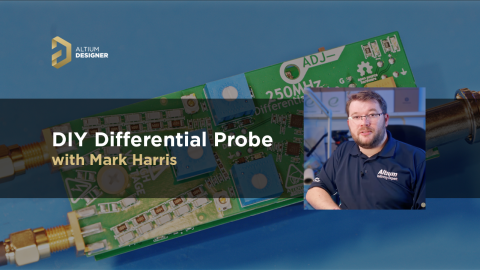SPICE Simulation Module: How To Use Automated Measurements in Simulations To Save Time and Money in Design Challenges

Simulation of electronics circuits is a key factor to your design success. SPICE circuit simulator may be used to speed the design analysis. Altium Designer will help you to simulate your designs in an efficient and accurate manner, providing a deep insight to your circuit functional operation.
One of the key types of analysis in Altium Designer is the transient analysis - a time domain simulation of your circuit. An example of transient analysis is given in figure 1. A pair of cursors can be used to determine the signal value of frequency, however signal quantities may be easily automated by means of a tool called: ‘Measurements’. An example of measurement configuration for the circuit presented in figure 1 is given in figure 2.

Figure 1 - A simple voltage mode buck converter

Figure 2 - Measurements configuration for buck converter
Automated measurements in Altium Designer’s SPICE simulator
There are a variety of automated measurements available in the Altium Designer SPICE simulator. Some of those are listed in figure 3. All of these signal quantities may be treated as measurements options available in every modern oscilloscope. For example, a clear indication about signal’s peak to peak level or RMS voltage may be displayed in the DSO as well in the Altium Designer SPICE simulator. Setup for these measurements in AD requires only one or two parameters: time span analysis and for some of the measurements: signal level at which the analysis is performed. The latter is required e.g. for frequency measurements.

Figure 3 - Part of the list of the automated measurements tab - part of the list
Use case for automated measurements
Let's consider a simple voltage mode buck converter with PWM regulation - figure 1. Some of the key parameters of a buck converter that designer should characterize in the hardware design are:
- Operating frequency;
- Inductor ripple current;
- Output voltage ripples.
There are many more important parameters for the SMPS design, however for the purpose of this introduction we will focus only on those mentioned in the first and last point from the list above. Note that Altium provides cursors in the Spice simulation module to determine signal values or frequency - an example is given in figure 4, however use of cursor in some measurements may not be as efficient and intuitive as automated measurements.

Figure 4 - Cursors used to determine signal frequency
For frequency measurements one can use cursors A and B (as given in figure 4). Cursors are placed one switching period apart to determine the signal period or frequency. However, if frequency adjustments are required for the design development (i.e. they are subjected to frequent changes due to components’ values tuning) the use of cursors becomes time consuming and prone to errors.
Another thing is selection of the inductor or output decoupling capacitor that may be time efficient if automated measurements are used. The same applies to many quantities of signals, not only those mentioned above.
An example of the automated measurement use are presented in figure 5 and 6. The measurements are accessible through the Panels tab (Panels->Sim Data). Figure 5 and 6 differ in the frequency of operation and inductor current (as well as the mode of operation - the former is the discontinuous operation one, the latter: continuous conduction mode).

Figure 5 - Example of automated measurement use - DCM of buck converter

Figure 6 - Example of automated measurement use - CCM of buck converter
Conclusions
Automated measurements in Altium Designer increase your productivity by:
- Easy configuration of ready to use automated measurements;
- Saving your time - measurements once configured provide you with signals quantities together with signal plots;
- Reducing errors related with signal analysis.










